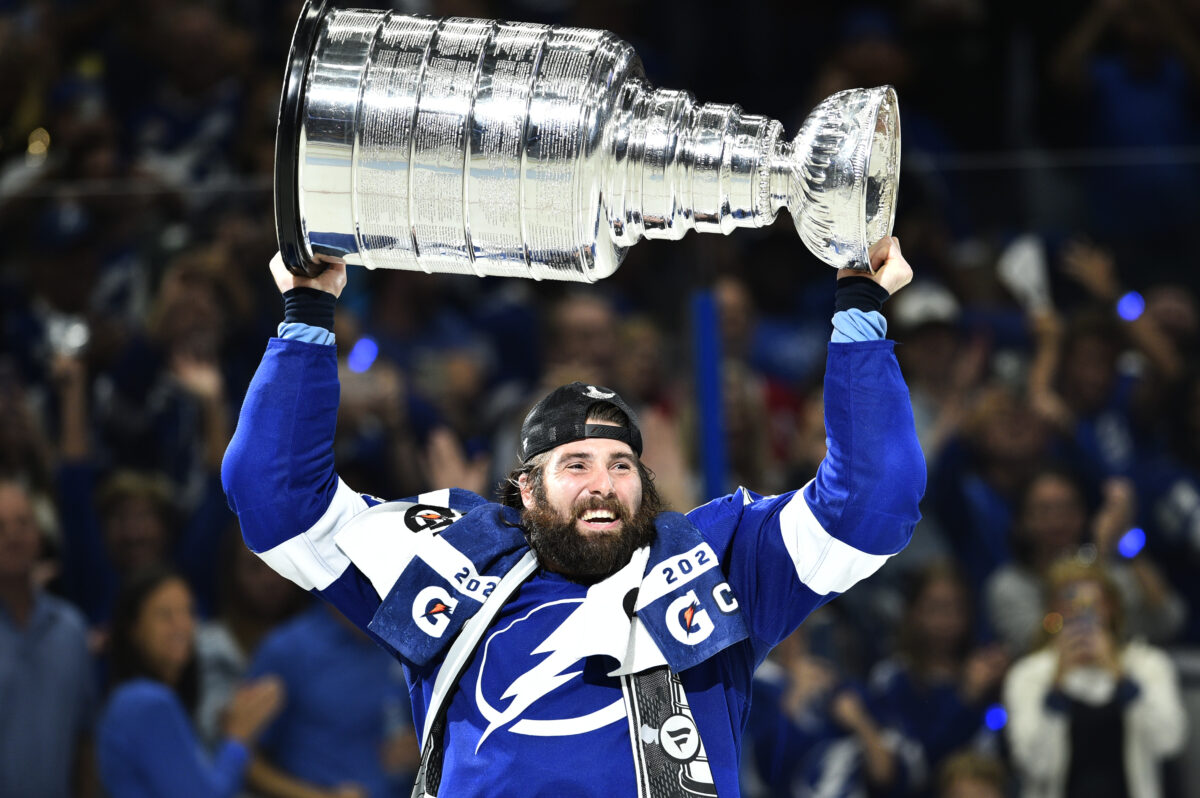Last season, the New York Islanders were only one game away from facing the Montreal Canadiens in the Stanley Cup Final. The two teams were well-built, and their balanced rosters resulted in deep playoff runs. While both teams lost to the Tampa Bay Lightning, who went on to win the Stanley Cup for the second consecutive season, the Islanders and Canadiens were both prime examples of how to build a winning team without star power.
Related: 3 Takeaways From Islanders’ Consecutive Home Games
On Sunday, Feb. 20, the Canadiens traveled to USB Arena and defeated the Islanders 3-2 in a shootout. It was a matchup of two teams that reached the Semifinal round, but the game was a greater reminder of how far both teams have fallen and struggled this season. The Canadiens have won only 11 games and have the worst record in the league, while the Islanders have only won 19 of their 46 games this season despite having Stanley Cup aspirations entering the season.
The NHL is built on parity, and teams drastically move in the standings from year to year. Still, the collapse of these two teams has been particularly a referendum on team building and the risks taken when relying on a deep roster.
Islanders, Canadiens’ Depth is Fragile
Every front office aspires to build a complete roster with little to no weaknesses. When a team doesn’t have the star players, acquiring valuable contributors on cheaper contracts is necessary for successful seasons. Even teams like the Lightning, who have the stars players like Andrei Vasilevskiy, Victor Hedman, and Brayden Point, can only win the Stanley Cup with valuable scorers on the bottom six lines like Blake Coleman and Patrick Maroon and defensemen like David Savard on the later pairings.

Unfortunately, rosters built solely on depth like the Canadiens and Islanders were last season carry risks. Everything needs to be perfect, and the roster must remain complete. Moreover, once a few players are missing or underachieving in their performance, the team collectively falls apart.
Islanders Lack Star Power
A lot has gone wrong for the Islanders this season that wasn’t in their control. Injuries to key players like Ryan Pulock missing multiple weeks with a lower-body injury, the 13-game road trip to start the season, and a COVID-19 outbreak that sidelined numerous players within the roster, all of which left the team with an awful start to the season, winning only five of their first 20 games. However, the team doesn’t have the high-end talent to carry the roster and, as a result, relies on the later forward lines and all six defensemen that start every game. Mathew Barzal, Brock Nelson, and Anders Lee are all talented players that lead the Islanders’ top two forward lines, but they aren’t the elite players that can carry the team and singlehandedly win games.

Instead, the Islanders entered this season relying on their depth players to step up to help win games. As a result, underachieving players like Kyle Palmieri and Zdeno Chara, combined with a depleted roster at times, have resulted in a disappointing season. The Islanders’ consecutive Stanley Cup Semifinal seasons were courtesy of the complete roster, but the entire team struggles once one or two players are removed from the lineup.
Canadiens Offseason Created This Disastrous Season
The Canadiens playoff run was a historical one that looked impossible to repeat, and the offseason that followed only fueled the awful season the great franchise is experiencing. Losing world-class goaltender Carey Price before the season started was out of the front office’s control, and both players are sorely missed. However, the Canadiens also lost Phillip Danault, Corey Perry, and Tomas Tatar to free agency, three forwards that played a pivotal role in the Stanley Cup run, contributing in all three zones. Moreover, the team declined to match the offer sheet for restricted free agent Jesperi Kotkaniemi, losing the promising 21-year-old forward to the Carolina Hurricanes.

The roster was carried by the deep forward lines and the ability to find goals on any shift. Whether it was Tyler Toffoli on the top line, leading the team with 28 goals in the 2020-21 season, or Artturi Lehkonen, who scored the Stanley Cup Semifinal Game 6 game-winning goal courtesy of a Danault pass on the odd-man rush sending the team to the Final. Suddenly a roster that relied on their depth was playing without it and didn’t have the players in place to step up and fill the void.
Does a Star-Studded Team Have its Consequences?
While the Canadiens and the Islanders are prime examples of how deep rosters can unravel from one season to the next, the opposite often occurs with teams that rely too heavily on their star players. Star players often take on big salary cap hits and leave little flexibility from the front office. The Toronto Maple Leafs and Edmonton Oilers stand out since both teams pay two of the best players in the game in Auston Matthews and Connor McDavid, two of the three most expensive contracts in the NHL. Both forwards often lead their teams to victory with great performances, but the rosters struggle to acquire depth and talented players to put the rosters over the top and lead them to the Stanley Cup.

Building a roster that is competitive for multiple seasons isn’t easy, to say the least. The teams that have seen sustained success have not only found star players but have maintained a balanced roster. Teams like the Lightning, Avalanche, and the Hurricanes have paid their star players and have them locked up into long-term deals but make sure to maintain a deep lineup as well, especially when the talented players struggle. Moreover, the well-run teams have a plan in place if they lose their depth players through the development of young prospects or free agency.